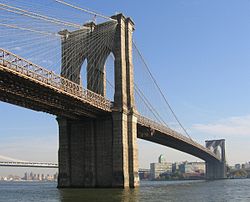[contextly_auto_sidebar id=”npP8u6de6KK3cPDVFRq7dyGjkAQtokuK”]
OFTEN I wonder how visual artists — most of whom are not rich and not famous — are faring while the global art market booms and auctions hit new heights. Solid data is hard to find, and much of the market is opaque. But an illuminating new story makes clear: Rising rents make it hard for artists in big cities to hold their own.
It’s been over six months since some four dozen artists lost their studios in Industry City, a sprawling factory complex on the Brooklyn waterfront. Many had spent decades hopping from studio to studio, from borough to borough. But according to interviews with over two dozen of the displaced, that practice of alighting in new, ungentrified neighborhoods has, at least for them, ground to something of a halt, hampered by a common refrain in New York: Rents are rising too fast.
That’s from a New York Times article that chronicles how visual artists — many of whom lift troubled urban neighborhoods up to the point at which they can attract coffee bars and artisanal cheese shops — are being pushed further and further out. In some cases, these artists came to Industry City after moving repeatedly, trying to find a stable place to labor on their paintings or sculptures or photography.
Many artists — especially sculptors and those who work with large media — need a studio space rather than a tiny home office to do their work.
Among other things, this kind of diaspora destroys the sense of community that’s often crucial to visual artists, who benefit from exposure to each others’ work and ideas. I speak from experience: Working in the isolation of home is simply not the same as being part of an engaged group of peers.
I get into some of this stuff in my upcoming book. But let me say for now: One of the best assessments of artists in the new economy is by the young lefty journalist Ben Davis. I don’t agree with everything in his book, 9.5 Theses on Art and Class, but it’s all provocative, and his opening essay, “Art and Class,” is sharp and clarifying. It deserves to be read as background to reports like this one about the Brooklyn waterfront, and these reports will not stop coming.
ALSO: The pianist Fred Hersch is one of the brilliant inheritors of the twilit, melodic tradition of jazz improvisation: He’s served as a mentor to Brad Mehldau and Ethan Iverson, and recorded many very fine sessions of his own. (My favorites may be Monk and Alone at the Vanguard.)
Hersch is currently on tour, and performs Sunday night at UCLA’s Schoenberg Hall, along with the young jazz guitarist Julian Lage, who plays a mean, understated archtop. It should be as close we we’ll get in the 21st century to the kind of sympathetic magic Bill Evans and Jim Hall could summon together. I’ll try to write about the show next week.
